Spencer Mann
State Overview:
- Maryland has the 12th highest GDP per capita among other states at $61926.
- In 2021, Maryland was ranked as the 4th best public education system in the country based on chance-for-success, school finance, and k-12 achievement.
- There are 1449 schools in the state of Maryland.

retrieved from: https://pixels.com/featured/downtown-baltimore-maryland-skyline-denis-tangney-jr.html
Fiscal facts:
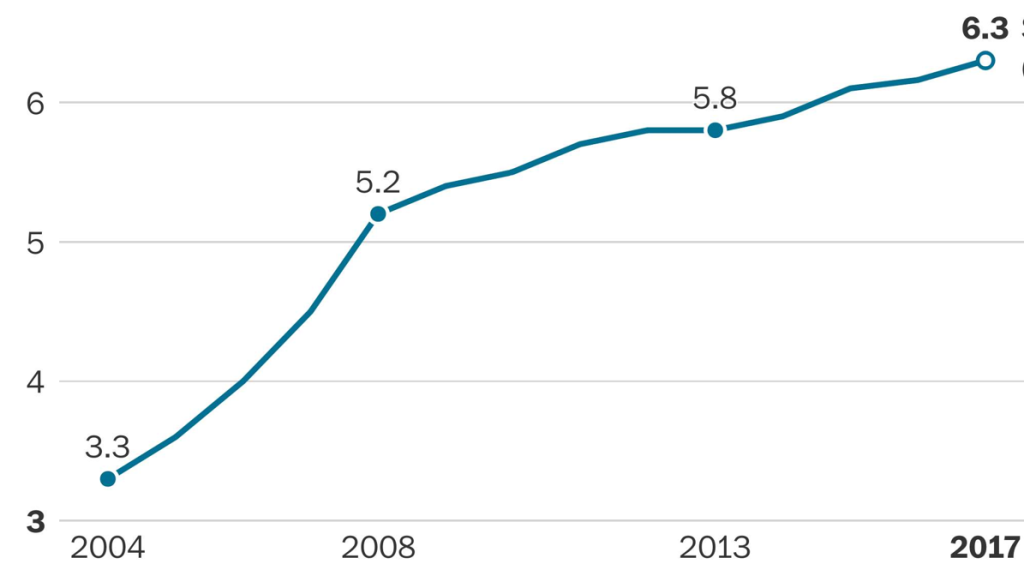
Public Education Spending (billions of dollars) over time in Maryland.
Government Spending – https://www.washingtonpost.com/news/local/wp/2016/02/02/fact-check-is-gov-larry-hogan-proposing-record-spending-on-maryland-education/
- Total state public education budget: $8.45 billion
- Average per-pupil expenditure: $14762
- High/low per-pupil expenditure within the state: Low Frederick County $13434 High Worcester County $18015
- Average national per-pupil expenditure: $12624
- State and local funding: 0.9% of Maryland taxpayers’ income (federal funding is 0.05% of taxpayers’ income)
Education Spending Statistics – https://educationdata.org/public-education-spending-statistics
Demographics:

retrieved from: https://www.dreamstime.com/illustration/hands-around-world.html
- Total public school student population: 882538
- Public v. private school attendance: 142928 private and 882538 public
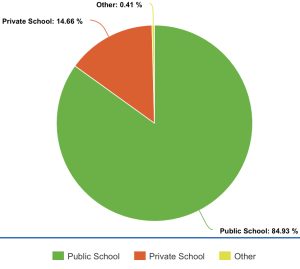
- Student demographics (English Language Learners, poverty rates:
- English Learners – 11.1% of student population
- Economically Disadvantaged – – 28.1% of student population
- Students with Disabilities – 11.6% of student population
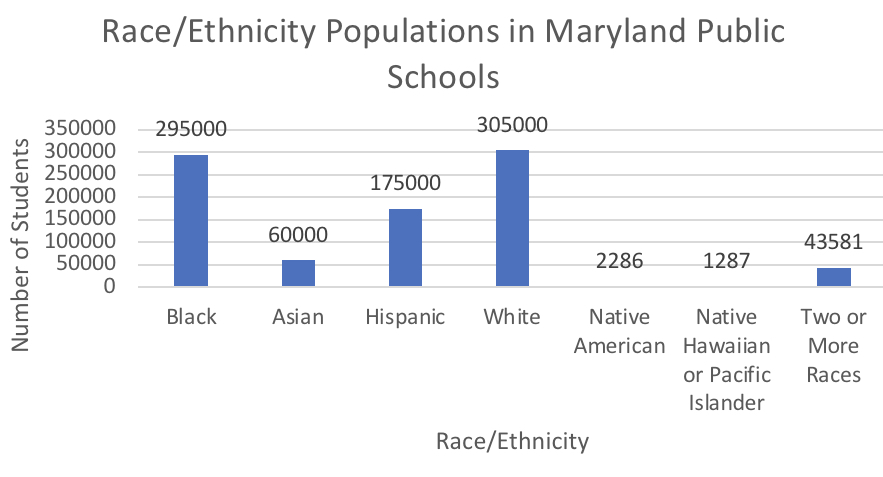
The graph above shows estimates of students based on previous years. It is not equal to the total number of students in the Maryland Public School Systems
- Graduation rates (total, and by demographics)
- total – 87.2%
- Black – 83.34%
- Asian – 96.65%
- Hispanic – 76.03%
- White – 93.66%
- Native American – 92.91%
- Native Hawaiian or Pacific Islander – 91.86%
- Two or more Races – 90.62%
- total – 87.2%
Maryland Report Card – https://reportcard.msde.maryland.gov/
Demographic Analysis:
As shown above, there are clear differences in graduation rates among different demographics in the state of Maryland. This trend is consistent with that of the entire nation as white students have higher graduation rates than both black and Hispanic students (79.6% for Black/African American, 81.7% for Hispanic, 89.4% for White).
This inequality is due in part to the disparities in funding among various counties. There is an over $4,500 difference in spending between two counties with the highest and lowest per-pupil expenditures in Maryland. High Worcester County has the highest per-pupil expenditure and is a predominantly white county (nearly 80% white) while Frederick County has the lowest per-pupil expenditure and is much more diverse (nearly 50% non-white). The differences in funding could also stem from property values, as the average property value for High Worcester County is much greater than that of Frederick County, so the funds derived from property taxes would be drastically different.
Additionally, staffing shortages in communities with high populations of black or Hispanic students contribute to this trend. In January of 2022, over 60 schools were forced to move to virtual in Baltimore City, a city whose population is 60% black, because of the COVID 19 pandemic. This comes at a time when most schools were open for in-person learning after initial closures in 2020 and 2021. The stresses that these schools are facing are increasing as the city is also amidst a massive teacher shortage. Staff members in the Baltimore City School district headquarters were asked to volunteer to assist in schools, leading to over 200 volunteer administrators teaching students. In many cases, teachers are forced to instruct on multiple disciplines, leaving them to sometimes teach classes that are out of their field of expertise. Studies have shown that teacher shortages lead to significant decreases in student achievement as these underprepared teachers are not certified to instruct on their multitude of subjects.
Unfortunately, the Maryland government has not yet found a way to combat the differences in funding between counties or teacher shortages, and graduation rates often reflect these inequities. However, the Maryland State Board of Education President Clarence Crawford recently unveiled a 10-year year plan to increase education spending by billions. He explained that this plan, carried out through federal funding and the “Blueprint for Maryland’s Future,” could be used as a way to help struggling students and in turn, increase graduation rates for minority groups. This plan has parts for each level of learning, from early childhood education to college and career readiness. Most of the plan involves expanding curricular resources and standards and working toward “accelerating student outcomes.” Though the plan will not address the desperate need for more teachers, it does tackle some funding inequities that could lead to disparities in student achievement. More efforts will need to be made by the state in order to attract and retain teachers in schools like those in Baltimore City.
Baltimore City Schools Struggling with Staffing Shortages – https://baltimore.cbslocal.com/2022/01/13/baltimore-city-schools-struggle-with-staffing-shortages/
Blueprint for Maryland’s Future – https://marylandpublicschools.org/Blueprint/Pages/Overview.aspx
Testing
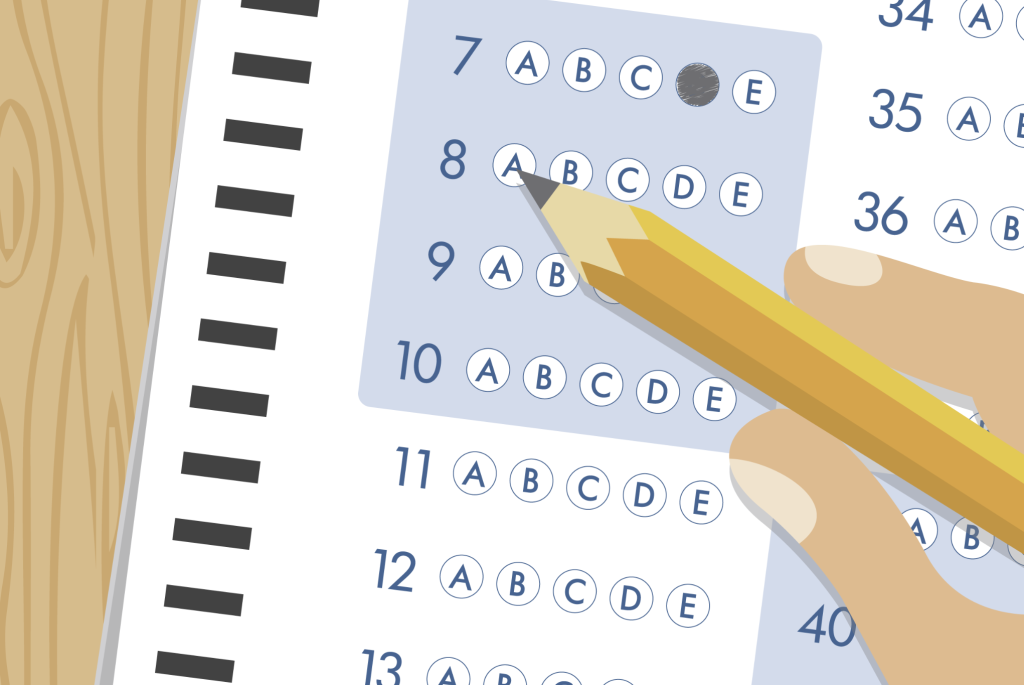
retrieved from: https://momentousinstitute.org/blog/standardized-tests
- Student Accountability Measures (By Subject):
- ELA Testing – 41.2% proficiency on the MSA (Maryland State Assessment), an exam that came about from the no child left behind movement.
- There was a 3% increase in proficiency between 2015 and 2019. The pandemic took its toll on every subject’s scores.
- Math Testing – 42.5% proficiency on the MSA
- There was a 6.1% increase in proficiency between 2015 and 2019.
- Science Testing – 29.1% proficiency on the MISA (Maryland Integrated Science Assessment), a test that is aligned with the Maryland Next Generation Science Standards (adopted in 2013)
- There was a 1.1% decrease in proficiency between 2018 and 2019. The MISA test was instituted within recent years, so reliable data that is not “Trial runs” is not available
- Scores from each test are compared yearly to measure student progression.
- Testing results were not posted from 2020 to 2022 as the pandemic took a great toll on every state’s education system. Maryland teachers were not as able to prepare their students for the exams and in many cases, the exams were not administered.
- ELA Testing – 41.2% proficiency on the MSA (Maryland State Assessment), an exam that came about from the no child left behind movement.
Maryland Report Card Assesments – https://reportcard.msde.maryland.gov/Graphs/#/Assessments/ElaPerformance/1EL/3/6/3/1/01/99/2021
Graduation requirements
| Subject | Credits Required |
| English | 4 credits including: English 9, 10, 11, 12 |
| Mathematics | 4 Credits and 4 years of participation including: 1 credit in Algebra 1, 1 credit in Geometry, and 2 credits beyond Geometry |
| Science | 3 credits in laboratory-based science that align to the Maryland Science Standards and the Life Science MCAP (Maryland Comprehensive Assessment Program) |
| Social Studies | 3 credits, including: 1 credit in U.S. History; 1 credit in Local, State & National Government; 1 credit in World History |
| Fine Arts | 1 credit |
| Physical Education | 1/2 credit |
| Health | 1 credit |
| Computer Science, Engineering, or Technology Education | 1 credit |
| Program Choice | 2 credits in the same World Language OR 3 or more credits in a Career Academy (State-approved Career and Technical Education Program) |
| Electives | 1-3 credit(s) to include courses beyond requirements |
Maryland Graduation Requirements – https://www.hcpss.org/schools/counseling-services/graduation-requirements/
Charter Schools and Vouchers
Charter schools were approved by law in 2003
- Number of charter schools: 50 charter schools in Maryland
- Percentage/number of students served: 0.41% which is about 19,000 students
School vouchers were enacted through a comprehensive program in 2016
- Voucher dollar amounts and percentage of students served: Vouchers are worth on average $3134 and 13.31% of students receive them
- Permissible voucher use: Vouchers are allowed to be used in any private school whether it is religious or not. They are provided through Maryland’s Broadening Options and Opportunities for Students Today (BOOST) Program. This is the state’s first private school choice program, providing vouchers to low-income students to attend private schools.
Maryland State Department of Education Charter Schools – https://marylandpublicschools.org/programs/Pages/Charter-Schools/index.aspx
Broadening Options and Opportunities for Students Today (BOOST) Program – edchoice.org/school-choice/programs/maryland-broadening-options-opportunities-students-today-boost-program/
Teachers
- Average teacher salary: $73,444
- Average National teacher salary: $63,645
- Presence of teacher’s unions/collective bargaining :
- The Maryland State Education Association (MSEA) has 76 thousand members. It is an affiliate of the National Education Association (NEA).
- Since educator strikes in Maryland are illegal, collective bargaining is typically used by the MSEA to negotiate contracts with local school boards. The association uses lobbying and other tactics to achieve higher salaries, benefits, and improvements in working conditions for teachers in the state of Maryland.
- Teacher evaluation methods and measures: Maryland has a requirement for a teacher to have at least two observations by an administrator per year. Other evaluation methods are left to different counties to determine. Teacher ineffectiveness is not explicitly stated as the grounds for dismissal.
How Much are Teachers Paid in Your State – https://www.business.org/hr/workforce-management/best-us-states-for-teachers/
Maryland State Education Association – https://marylandeducators.org/
In the News!
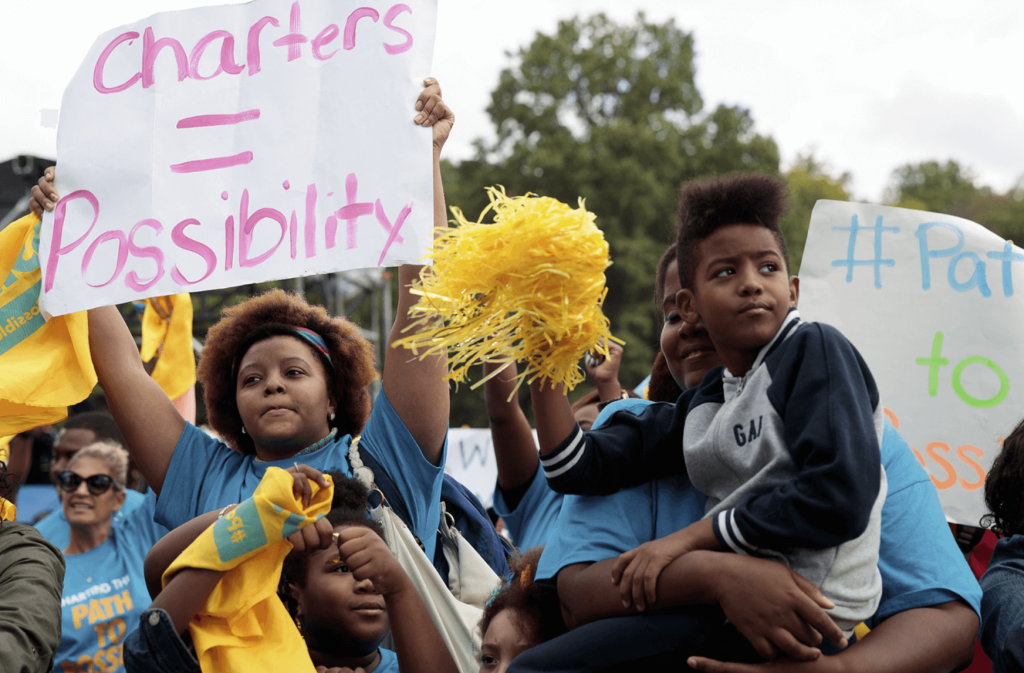
retrieved from: https://www.educationnext.org/bigger-picture-charter-school-results-national-analysis-system-level-effects-test-scores-graduation-rates/
In December of 2021, a federal district court ruled that Maryland officials violated the first amendment after they revoked a school’s eligibility to participate in a voucher program that benefitted low-income students on the ground of the school’s religious beliefs on marriage and sexuality. Prior to the 2017-2018 school year, the Maryland Department of Education began to demand that religious schools that participated in the BOOST program (the aforementioned voucher program) send their student handbooks. The department then would decide whether schools would qualify for the program.
The Bethel Christian Academy in the Baltimore Metro area serves students hailing from over 40 different nations, many of whom recently immigrated to the United States. Many families with attending children are only able to afford the tuition through the BOOST voucher program. Two weeks into the 2018 school year, parents participating in the program were informed that the Bethel Christian academy was no longer able to accept vouchers. The state explained that this change came after reading the school’s beliefs on marriage and sexuality. State officials also demanded that the school pay back $102 thousand dollars in previously paid scholarships that it received through the BOOST program before the start of the 2018 school year.
The Christian school took the Maryland Department of Education to the US District Court for the District of Maryland, claiming they were entitled to the funds through the voucher program. The court ruled the actions of Maryland officials was in violation of free speech. While states are allowed to prohibit discriminatory behavior, the school represented that it will not descriminate against students based on their gender identity or sexual orientation. The court also pointed out that a private organization cannot be forced to renounce its religious character to participate in a public benefit program based off of the ruling a court case two years prior. The Bethel Christian Academy was allowed to continue its participation in the BOOST program and was not required to pay back the funds acquired through the program during the 2018 school year.
This issue ties with the nationwide conservative effort to make public funds usable for private education. This topic also brings in the disparities in graduation rates throughout the state of Maryland. As one can see from the data above, non-white students generally graduate at lower percentages than white students. Many believe that school choice is a method of remedying these disparities as parents will be able to send their children to schools they deem fit for their children to succeed. There is no conclusive evidence showing that school choice increases graduation rates because there are conflicting results from different places. Florida and Milwaulkee programs yielded positive outcomes after switching to a school choice model for their education systems, but DC yielded no statistically significant positive or negative outcomes.
Especially in places with lower graduation rates, like Baltimore City, where the graduation rate is just over 80%, and over 60% of the population in Baltimore city is black, many believe the key to improving graduation rates and the quality of education is to increase school choice. Proponents claim it will not only increase the number of students who complete their secondary education in the city, but it will also ease the load of public schools in the city, that are currently understaffed and overenrolled with students. Once again, we lack definitive evidence to see if this push toward school choice would actually be beneficial for students in Maryland.
News Article from https://adfmedia.org/press-release/court-maryland-violated-christian-schools-rights-cant-reclaim-102k-funding
Other info from The United States Department of Justice – https://www.justice.gov/opa/pr/united-states-files-brief-explaining-maryland-improperly-excluded-christian-school
Sources:
- Baltimore, Maryland population 2022. Baltimore, Maryland Population 2022 (Demographics, Maps, Graphs). (n.d.). Retrieved May 8, 2022, from https://worldpopulationreview.com/us-cities/baltimore-md-population
- by, W., & Wheelwright, T. (2022, April 21). Best states for teacher pay in 2021. Business.org. Retrieved May 9, 2022, from https://www.business.org/hr/workforce-management/best-us-states-for-teachers/
- Court: Maryland violated Christian School’s rights, CAN’T RECLAIM $102K in funding. ADFMedia.org. (2021, December 10). Retrieved May 8, 2022, from https://adfmedia.org/press-release/court-maryland-violated-christian-schools-rights-cant-reclaim-102k-funding
- Hanson, M., & Checked, F. (2022, March 21). U.S. public education spending statistics [2022]: Per pupil + total. Education Data Initiative. Retrieved May 8, 2022, from https://educationdata.org/public-education-spending-statistics
- Maryland graduation requirements. Howard County Public School System Maryland Graduation Requirements Comments. (n.d.). Retrieved May 9, 2022, from https://www.hcpss.org/schools/counseling-services/graduation-requirements/
- Maryland State Department of Education. (2021). Overview. Maryland State Department of Education. Retrieved May 8, 2022, from https://marylandpublicschools.org/Blueprint/Pages/Overview.aspx#:~:text=Promise%20and%20opportunity%20for%20every%20Maryland%20child.&text=Increasing%20education%20funding%20by%20%243.8,quality%20of%20education%20in%20Maryland.
- Msde. (n.d.). Welcome to the Maryland Report Card. Maryland State Department of Education. Retrieved May 8, 2022, from https://reportcard.msde.maryland.gov/
- Mybarra. (2022, January 13). Baltimore City Schools Struggle with staffing shortages. CBS Baltimore. Retrieved May 8, 2022, from https://baltimore.cbslocal.com/2022/01/13/baltimore-city-schools-struggle-with-staffing-shortages/
- Overview. Maryland State Department of Education. (n.d.). Retrieved May 9, 2022, from https://marylandpublicschools.org/Blueprint/Pages/Overview.aspx
- School Choice in Maryland. EdChoice. (2021, June 2). Retrieved May 9, 2022, from https://www.edchoice.org/school-choice/state/maryland/
- Teacher evaluation policy in Maryland. (n.d.). Retrieved May 8, 2022, from https://www.nctq.org/dmsView/Evaluation_Timeline_Brief_Maryland
- United States files brief explaining that Maryland improperly excluded Christian School from scholarship program. The United States Department of Justice. (2019, November 26). Retrieved May 8, 2022, from https://www.justice.gov/opa/pr/united-states-files-brief-explaining-maryland-improperly-excluded-christian-school